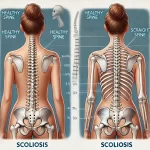Firstly, it’s important to understand what bone marrow transplants are and why they’re performed. Bone marrow is the spongy tissue found inside our bones that produces red blood cells, white blood cells, and platelets. Bone marrow transplant, also known as a hematopoietic stem cell transplant, is a medical procedure in which unhealthy bone marrow is replaced with healthy bone marrow. The procedure is used to treat various conditions, including leukemia, lymphoma, sickle cell anemia, and other blood-related disorders.
Stem cells are a crucial component of bone marrow transplants because they have the ability to differentiate into various cell types, including blood cells. Stem cells can be collected from various sources, including bone marrow, peripheral blood, and umbilical cord blood. The stem cells are then transplanted into the patient’s body, where they travel to the bone marrow and start producing healthy blood cells.
/span>
One of the most significant advantages of stem cell therapy in bone marrow transplants is that it allows for a more precise match between the donor and the recipient. The human leukocyte antigen (HLA) system is a group of genes that play a crucial role in the immune system. When a patient receives a bone marrow transplant, the donor’s HLA markers must match the recipient’s HLA markers as closely as possible. If the HLA markers don’t match, the patient’s immune system may reject the transplanted cells, leading to graft-versus-host disease (GVHD).
Stem cell therapy allows doctors to identify the best possible match for the patient. In some cases, stem cells can be harvested from the patient themselves, eliminating the risk of GVHD altogether. In other cases, stem cells can be harvested from a family member or unrelated donor who has a close HLA match.
The success of bone marrow transplants depends on several factors, including the source of stem cells, the degree of HLA matching, and the patient’s overall health. In general, bone
marrow transplants have a higher success rate when stem cells are collected from a closely matched donor.
Stem cell therapy has also made it possible to perform bone marrow transplants on older patients who may not have been considered suitable candidates in the past. As we age, our bone marrow becomes less efficient at producing healthy blood cells. This can lead to various blood-related disorders, including leukemia and lymphoma. Stem cell therapy can help restore the bone marrow’s ability to produce healthy blood cells, providing a new lease on life for older patients.
However, it’s important to note that bone marrow transplants are not without risks. The procedure can cause various side effects, including nausea, vomiting, fatigue, and hair loss. In some cases, the patient’s immune system may reject the transplanted cells, leading to GVHD. This condition can be life-threatening and requires prompt medical attention.
To minimize the risks associated with bone marrow transplants, it’s essential to work with a team of experienced medical professionals. Your doctor will carefully evaluate your health status and recommend the best possible treatment plan. It’s crucial to follow your doctor’s instructions carefully, including any post-transplant medications or lifestyle changes.
In conclusion, stem cell therapy plays a crucial role in bone marrow transplants. Stem cells have the unique ability to differentiate into various cell types, making them an essential component
